Glenn Murcutt
Marika-Alderton House
1990–1994
“The Department’s method of procuring architectural services by awarding a project to an architect on the basis of the lowest fee was not acceptable to my clients. Both the Engineer James Taylor and I were invited as honorary consultants, bypassing the Department’s process. The Australian High Court’s landmark decision in 1992 on the case brought by Eddie Koiki Mabo, known as ‘The Mabo Case’, finally recognised Native Title over Traditional Lands for Aboriginal people after 200 years of white settlement. The Aboriginal people of Yirrkala won the return of their land, but the Government still owns and rents the dwellings to the Aboriginal people.
In 1993, for all housing in Yirrkala, Government representatives had control over all final decisions on design, building approvals, allocation of building funds and all construction within the community. Failure to obtain approval at any of the numerous stages prevented a project from proceeding. The design of this dwelling challenged the ‘concrete block bunker’, a totally unimaginative and I believe inappropriate typology developed following the disastrous 1974 ‘Cyclone Tracy’ in Darwin.
For four years, negotiations with Departmental representatives were fraught, mostly through ‘manufactured problems’, resulting in huge delays, extreme frustration for my clients and me, as well as wasting huge amounts of my time throughout the whole formal approval process. Finally, my clients had to engage their own —very good— builder, who came from Gosford, 100 km north of Sydney, as the Department at that time had no interest in assisting in any aspect of the project, despite their being responsible for all housing construction! The site is part of the clan’s traditional lands identified under the Native Title Act. It is locally known as ‘Beachcamp’. Being on a spit of coastal land, it is about 4.5 m above the Arafura Sea of the Northern Territory, facing north. To the south of this spit runs the beautiful and safe freshwater creek where the community children spend much time swimming and playing. The land is within the Monsoonal Tropic climatic zone, set at latitude 12.5 oS. In these most northern regions of Australia, late November and December is the period when the days can be still, the heat builds up, the humidity is high and the storm clouds build.”
Altitude: 3m above sea level. Monsoonal tropical climate. Subject to occasional tidal flooding 500mm deep during cyclones. Wet summers, dry winters. Summer, circa 33˚C, hot north-west winds. Winter south-east winds, temperatures rarely below 25˚C with lows of 20˚C on winter nights. Sandy soil with good drainage.
Commissioned by the aboriginal leader Banduk Marika and her partner Mark Alderton this project is in Yirrkala on land associated with the Marika clan. The project presented a rare opportunity to design a house in Australia’s extreme north and to architecturally address the inherent climatic and cultural conditions. Facing the Arafura Sea and the Gulf of Carpentaria the site has a tropical climate with cyclonic conditions, high winds and very heavy rainfall. Surrounded by a beach, estuary creek and freshwater lagoon, the building is slightly removed from a generally suburban settlement.
It was conceived by Murcutt as a prototype and as a viable alternative to the house then occupied by the clients, a brick building with small windows typical of aboriginal public housing in this context. Prefabricated in Gosford, north of Sydney, all components were packed in two shipping containers and transported to site via semi-trailer and barge. The house was bolted and screwed together on site, the entire process taking four months.
The building is elemental. A pitched roof, dry timber platform and operable skin float in relation to each other. The structural system is comprised of a steel frame and Australian hardwoods. The fine sheet metal roof is dominant, deep eaves protecting the interior from summer sun. The exterior wall is treated as finely crafted infill panels with no glazed openings. These typically plywood and slatted timber screens slide or pivot open allowing prevailing breezes to naturally cool the house.
One of the most striking aspects of the architecture is the southern façade, where vertical plywood blades of varying depths project out from the steel column line. These register the dimensions of different built-in furniture elements; a kitchen bench, timber joinery or beds, framed as floating window bays. The fins provide both visual privacy and shade from the summer sun in early morning and late afternoon. Voids under the bay structures confirm the sense of suspension above a horizontal floor plane. In this house Murcutt creates a situation from which the inhabitants can observe the horizon, changes in the weather patterns, the movement of people and animals and the playing of children; a building which is experienced as an elevated shaded platform.
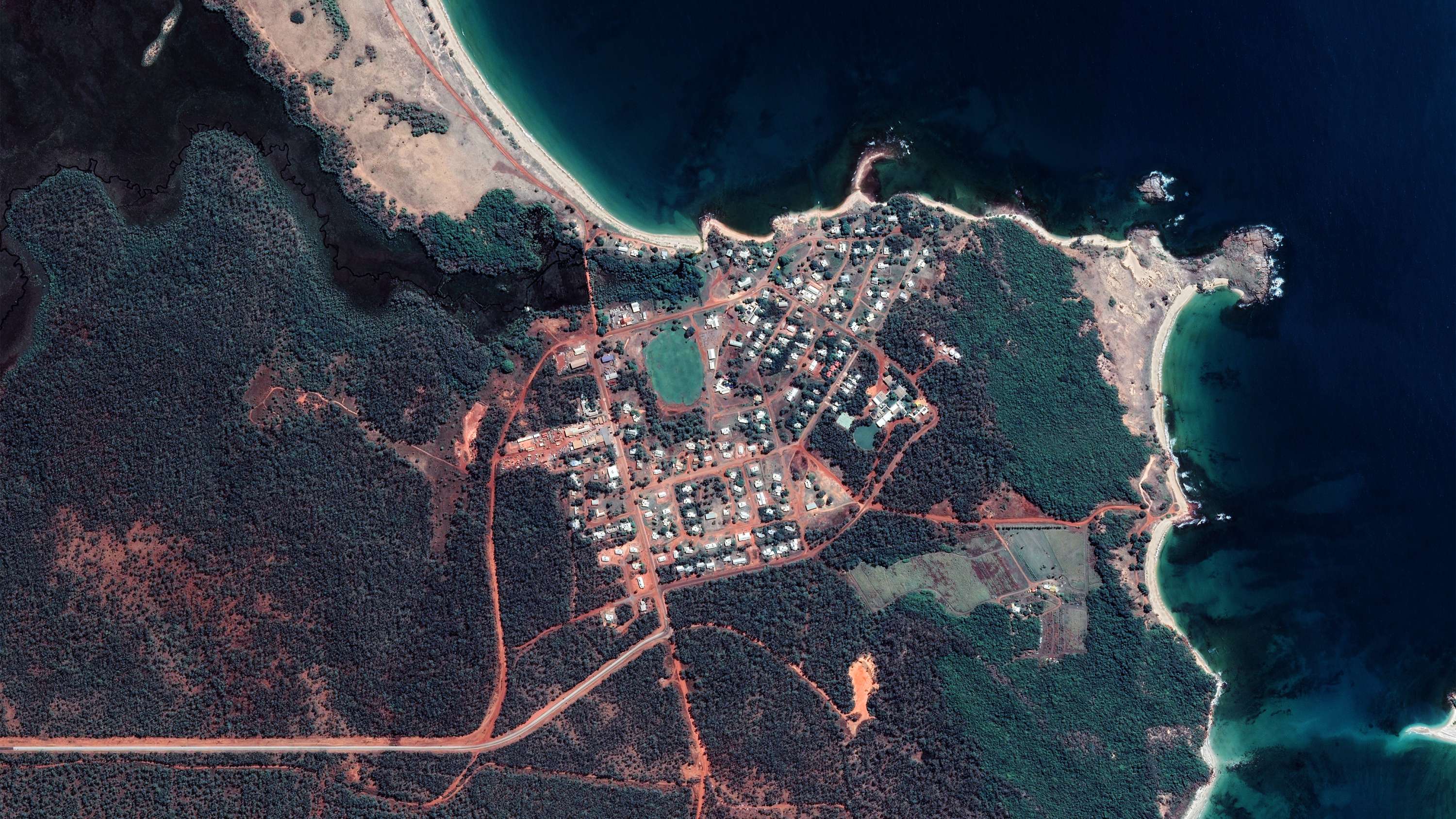
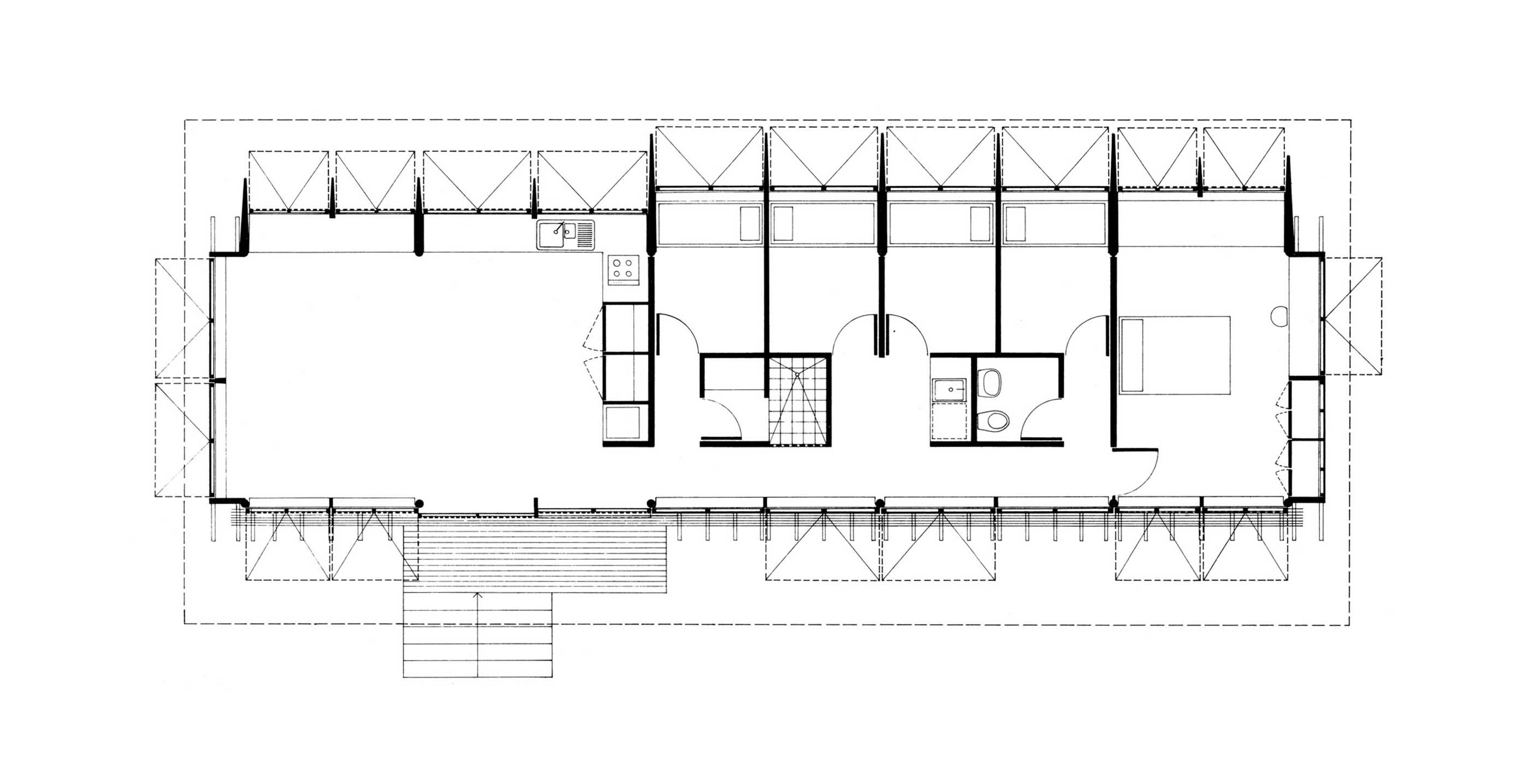
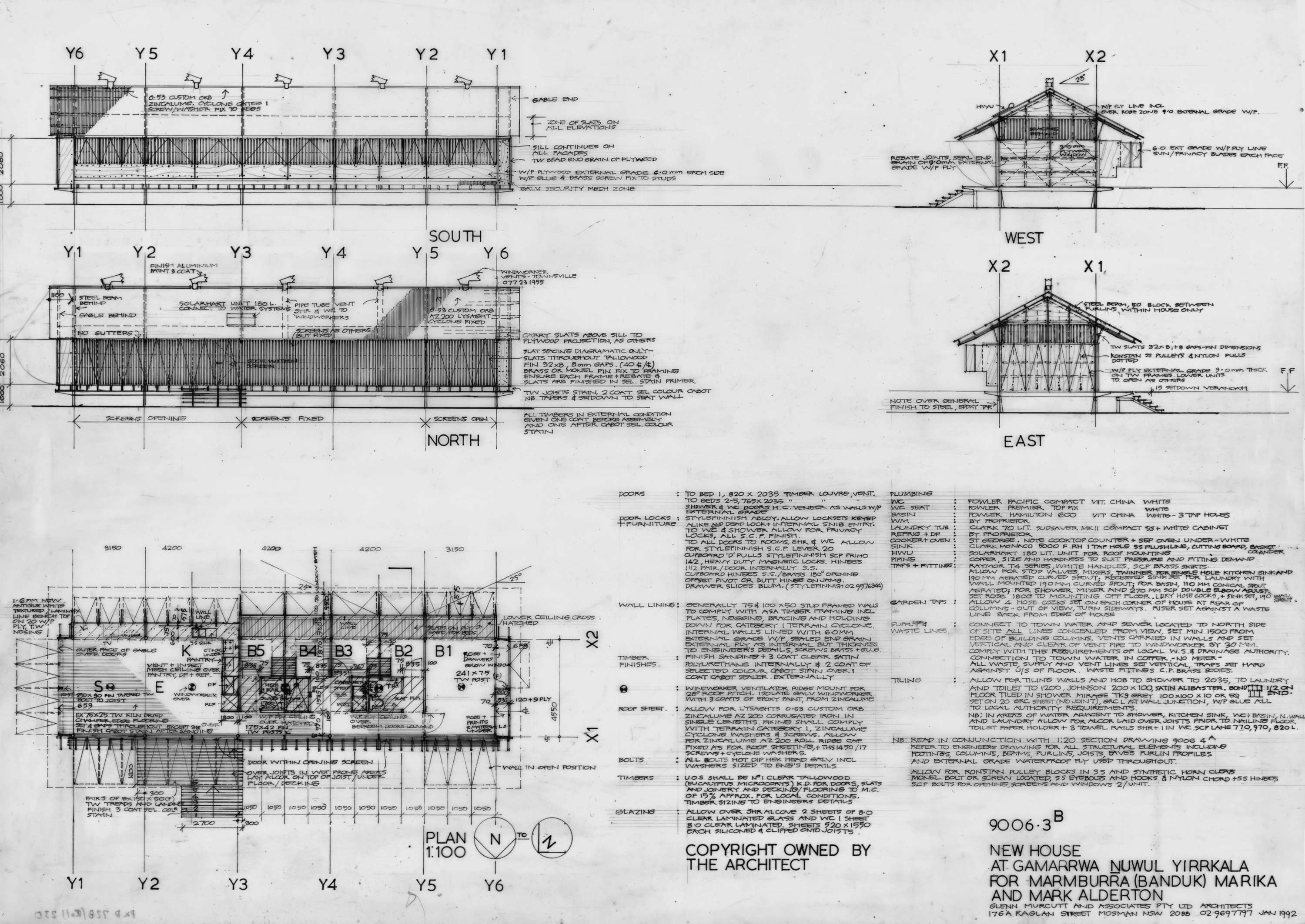
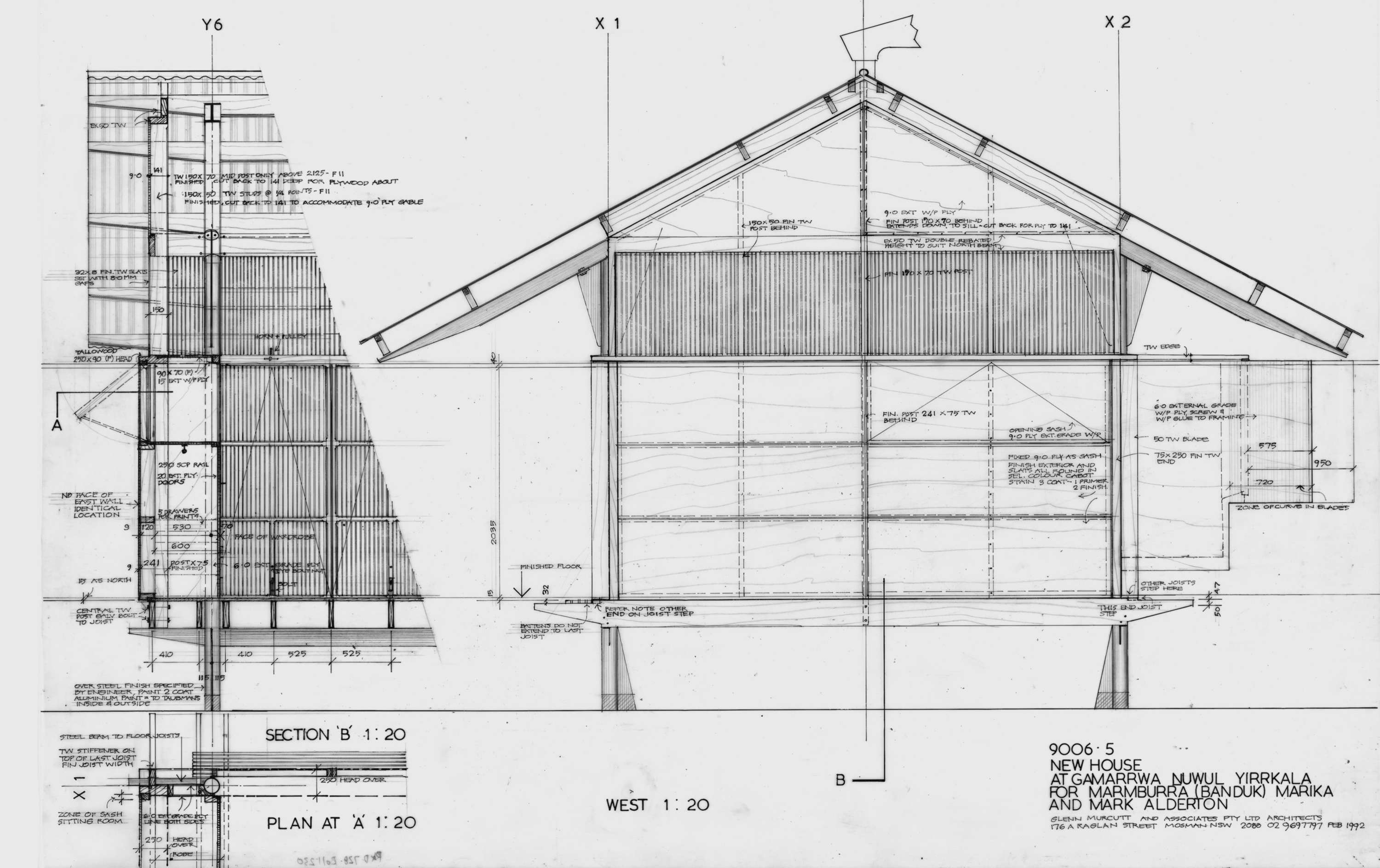
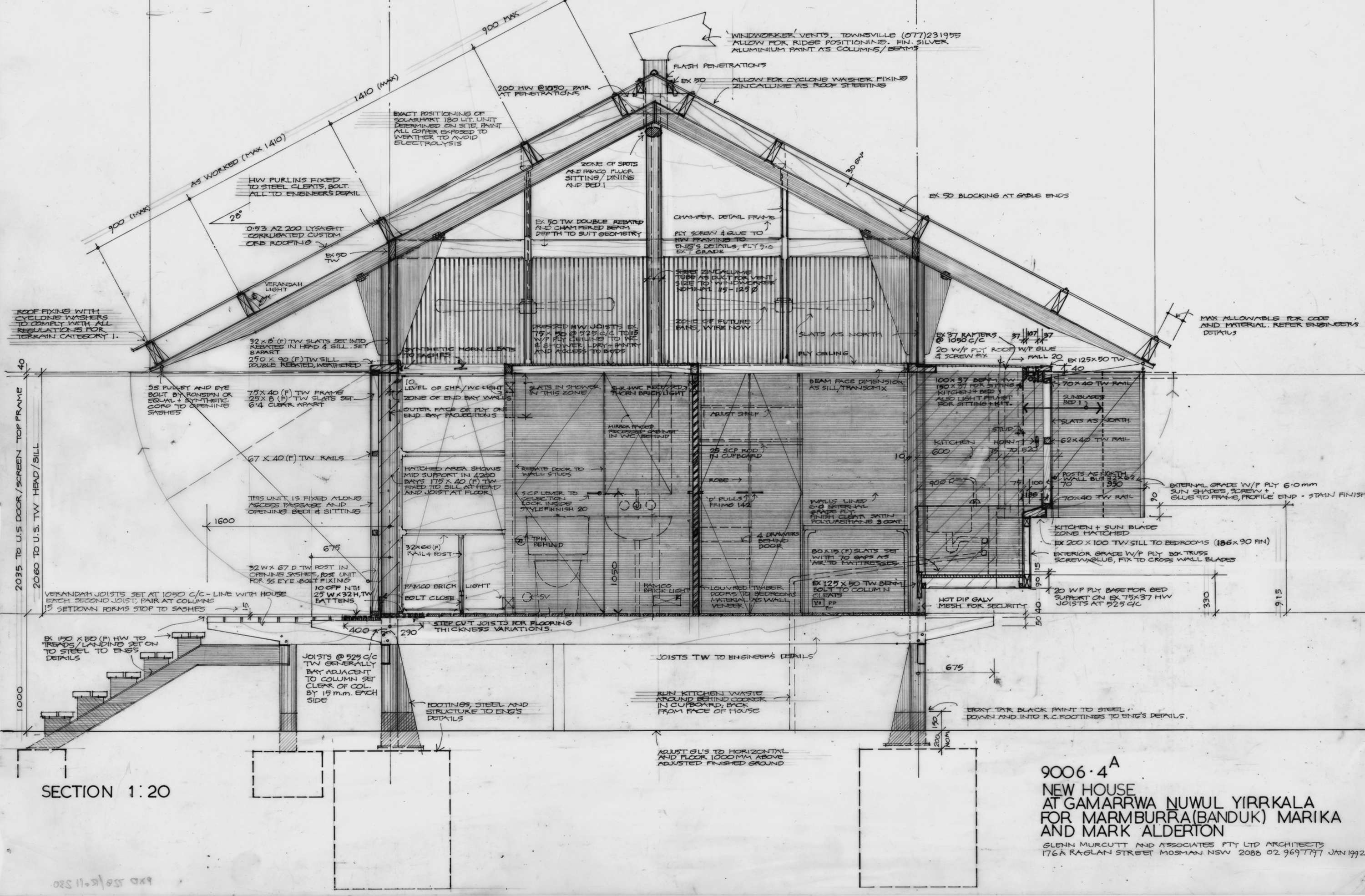
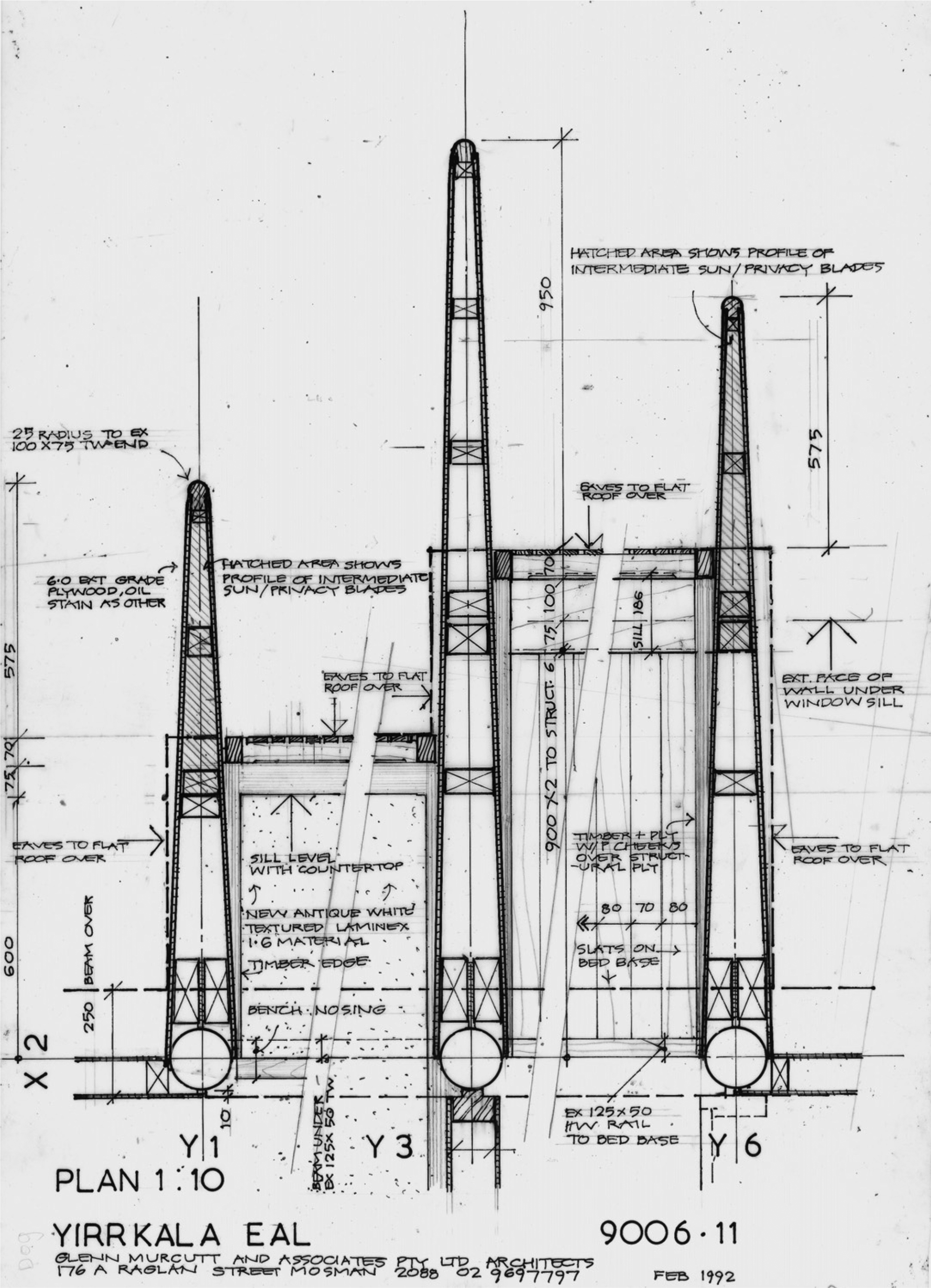
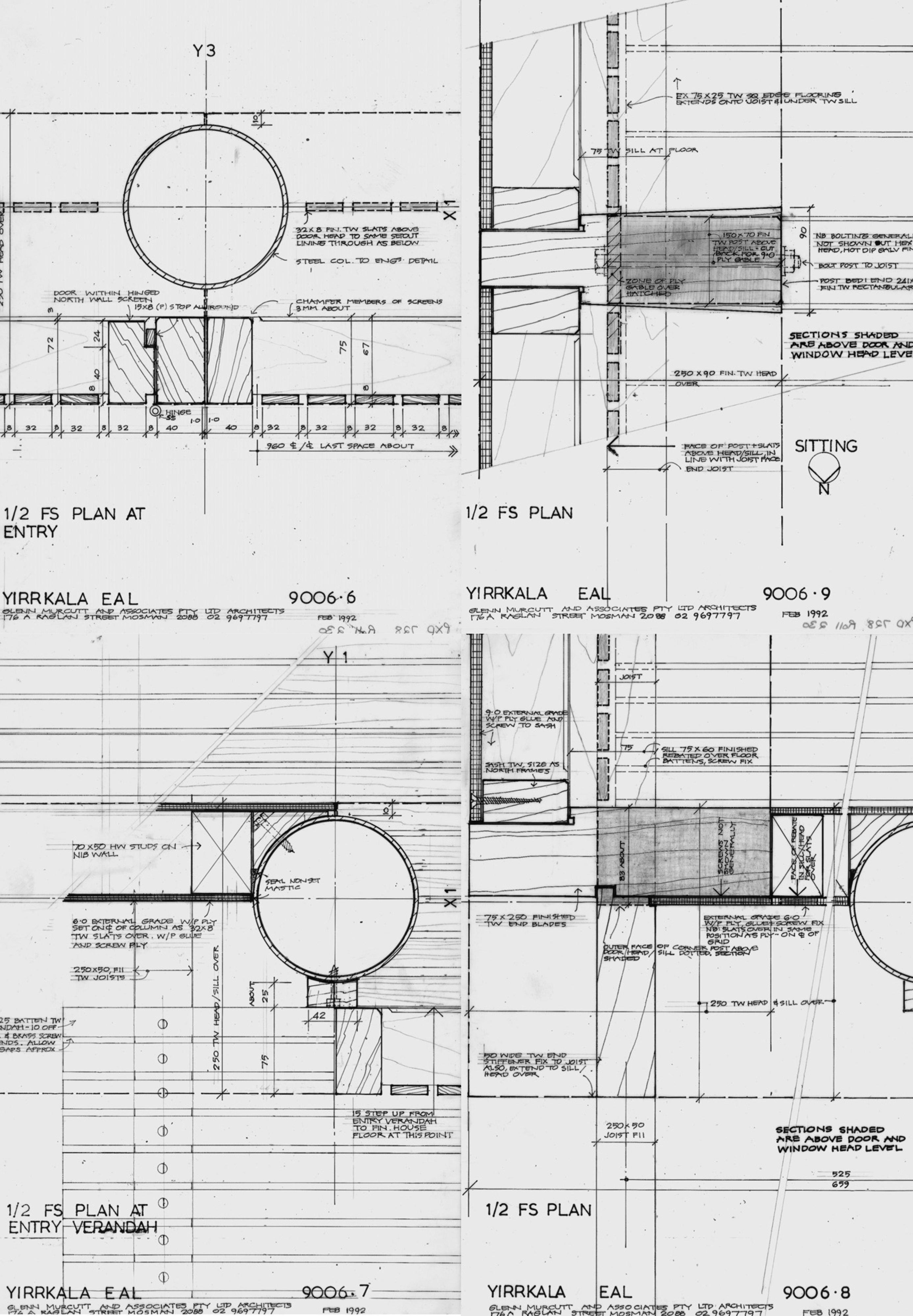
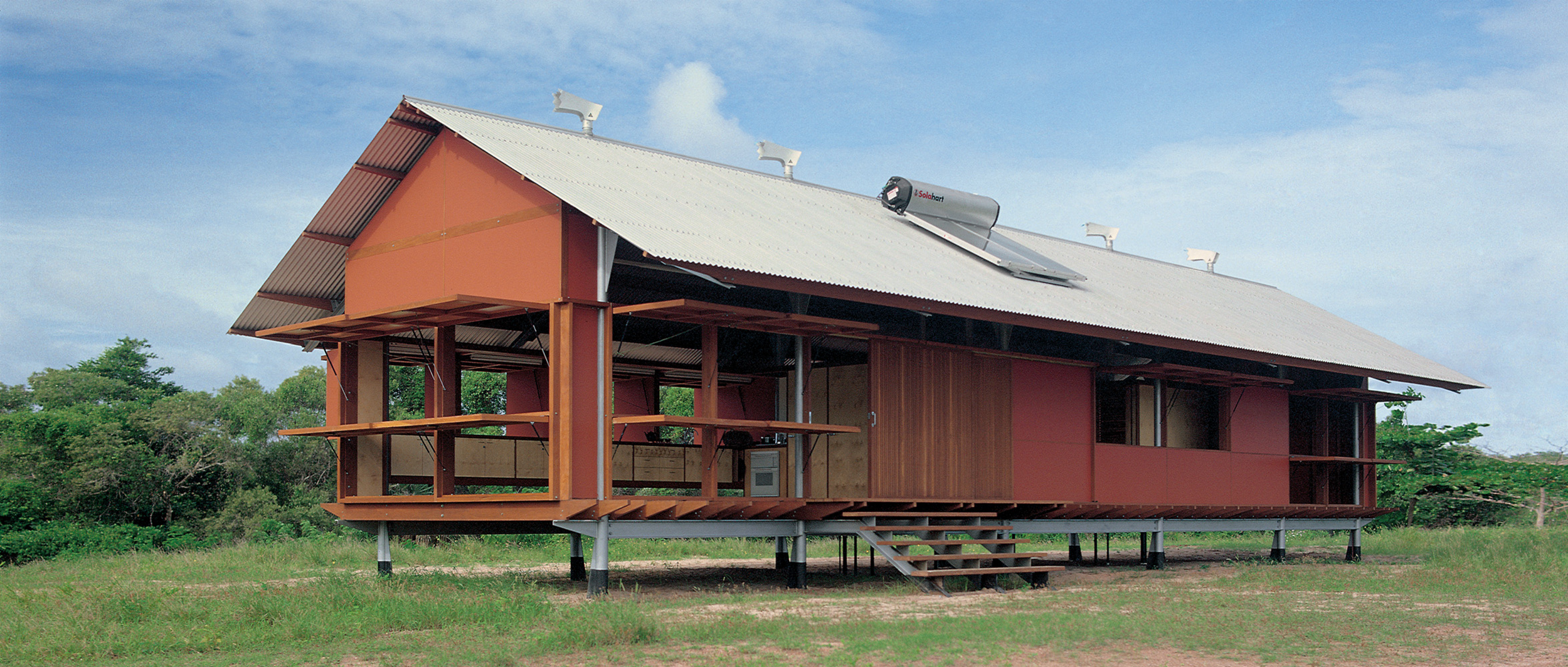
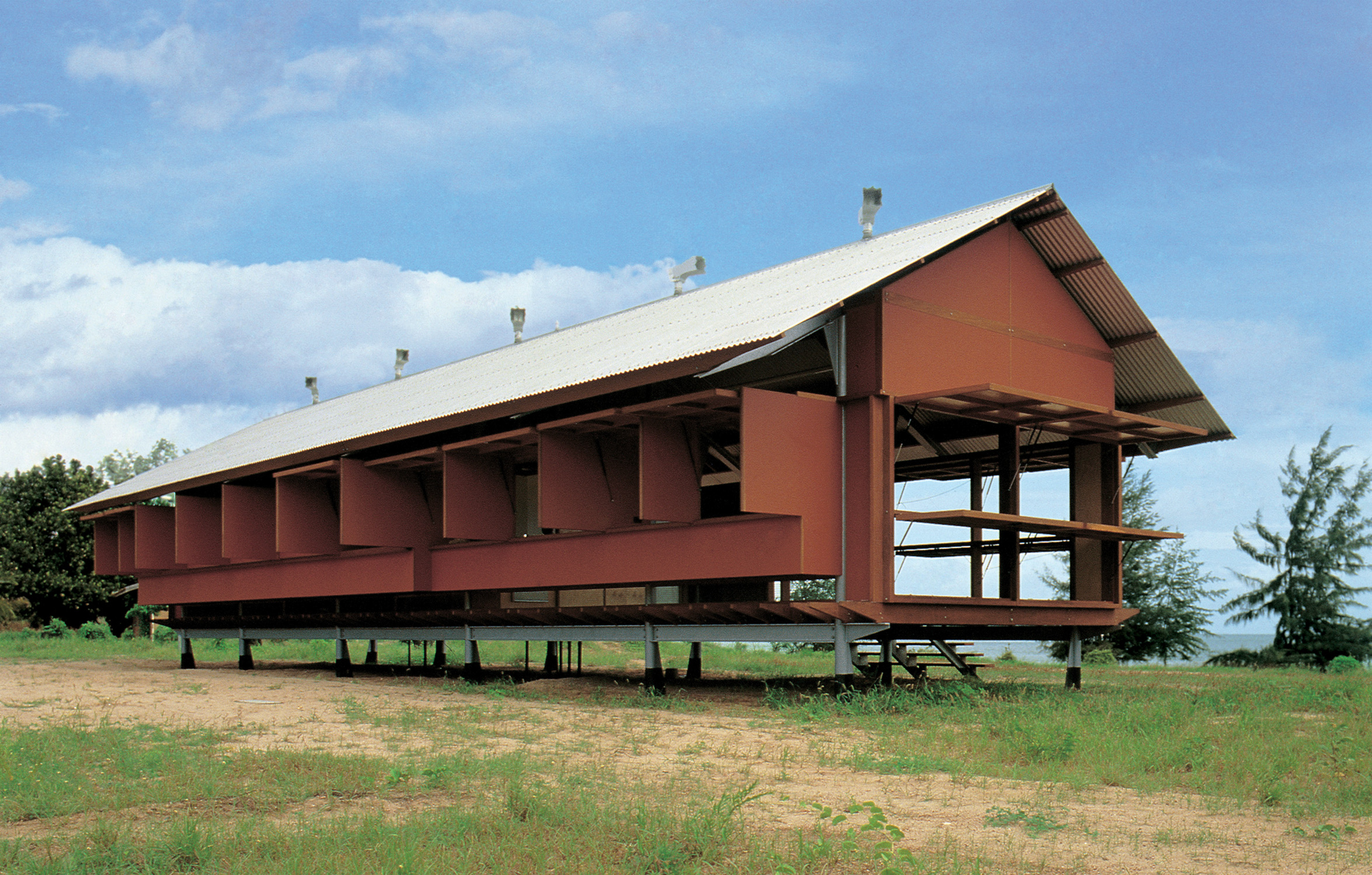
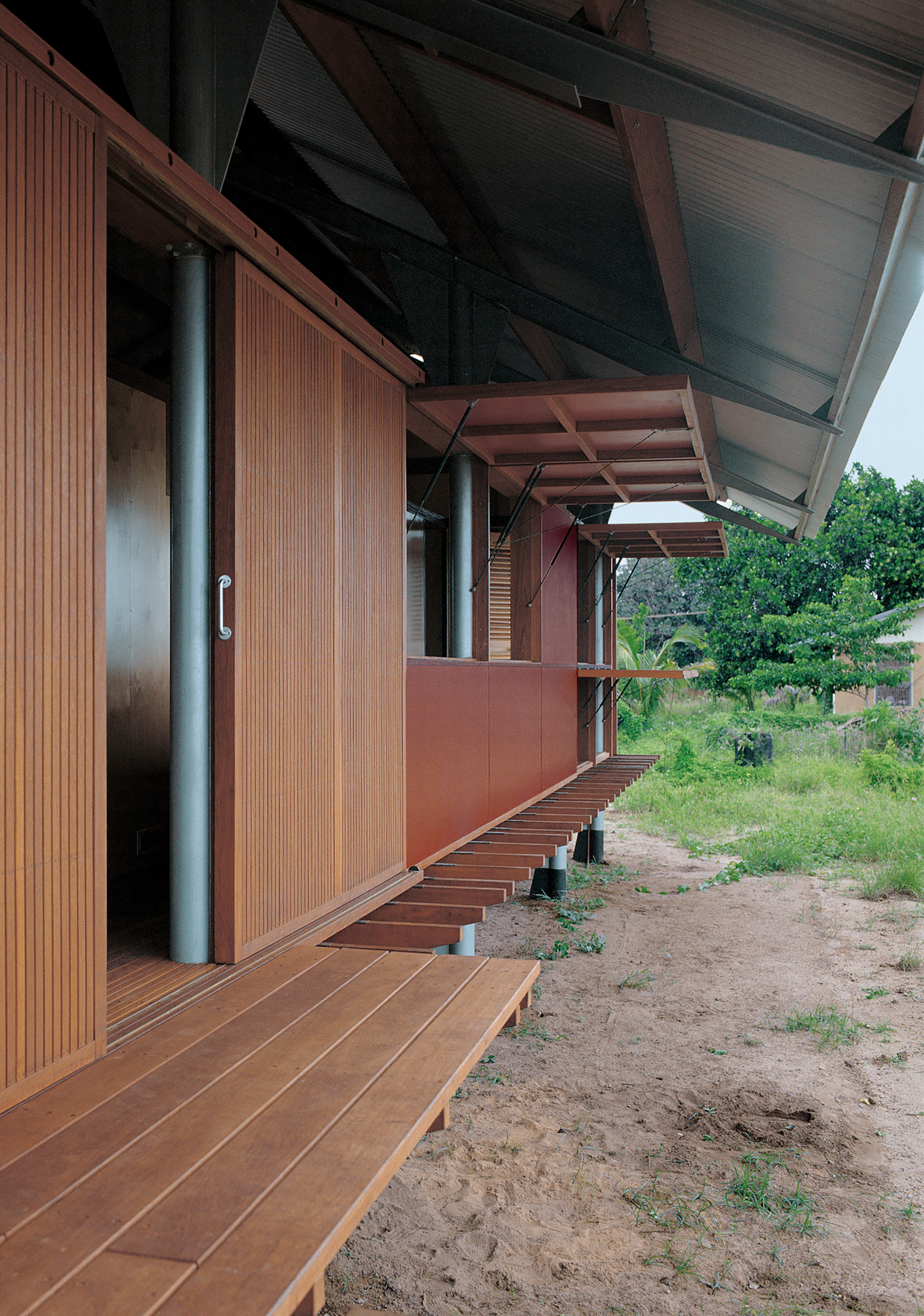
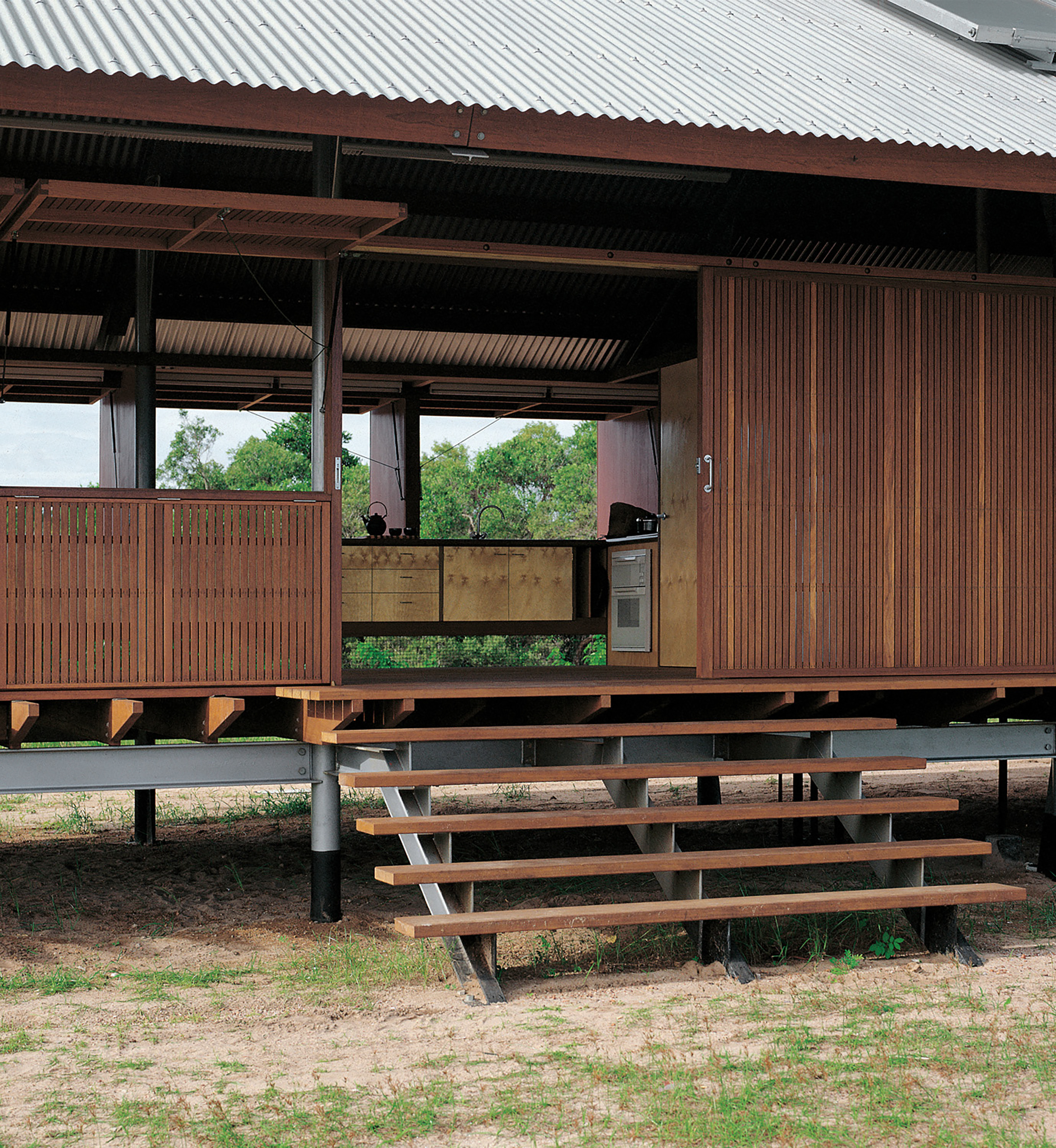
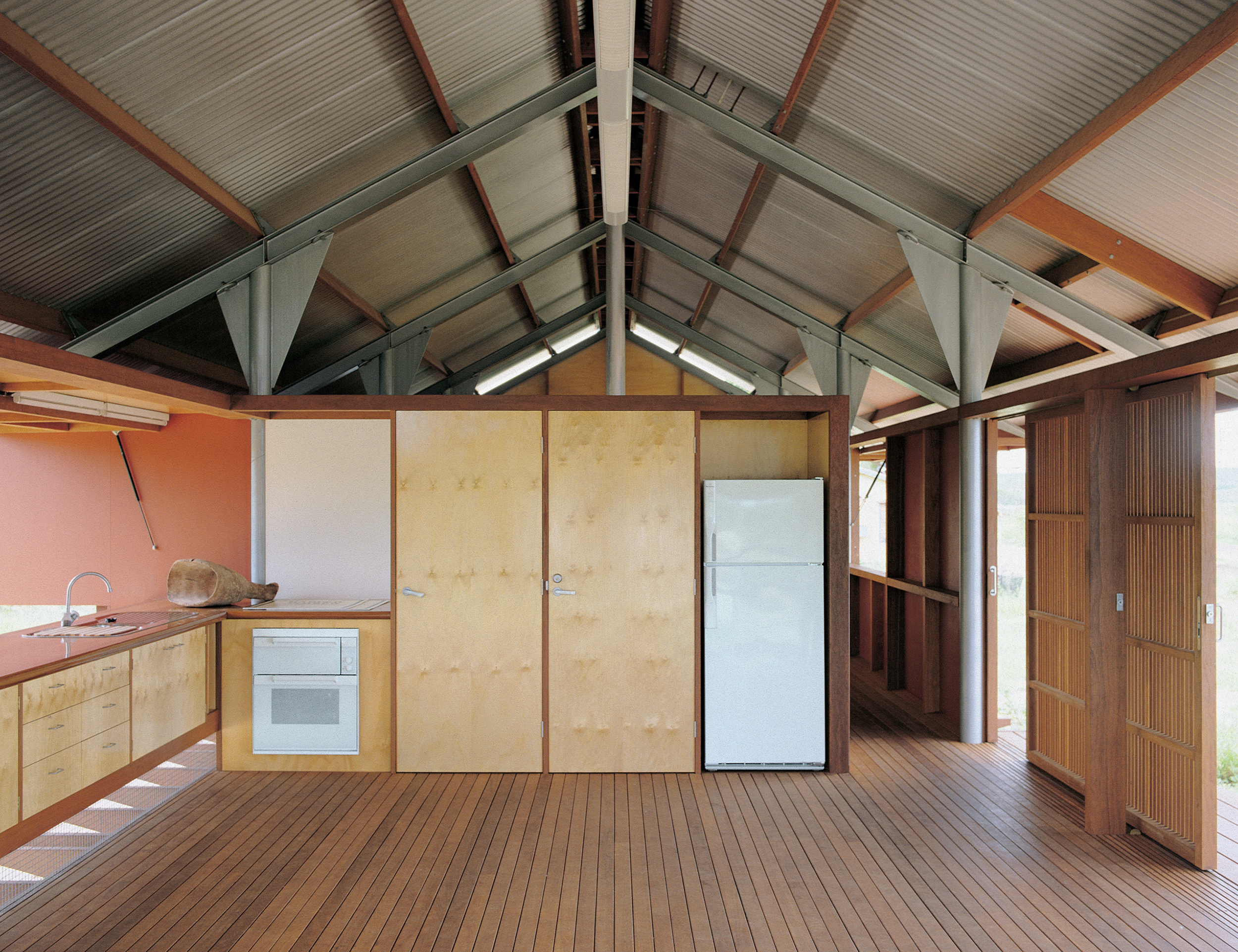
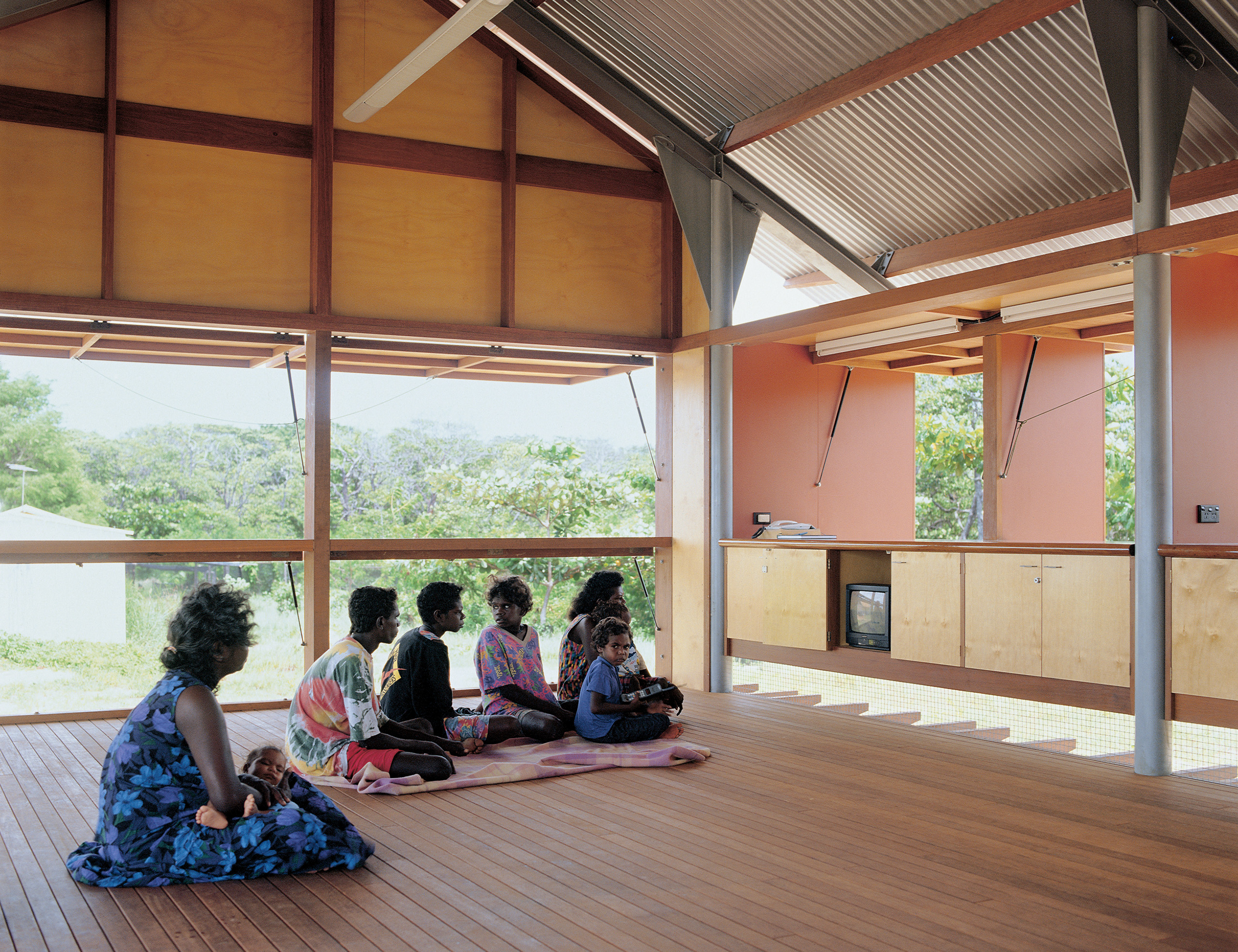

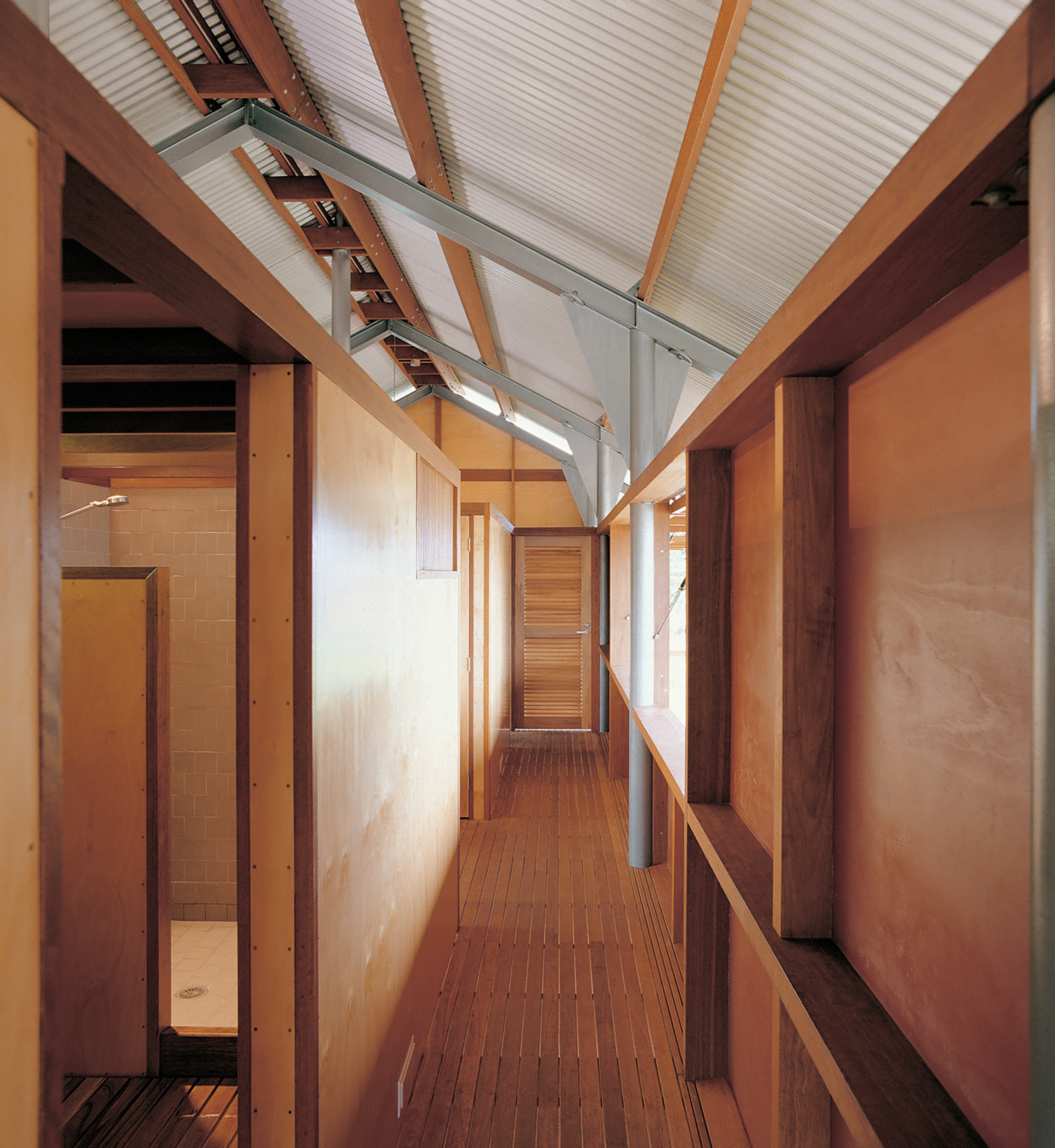
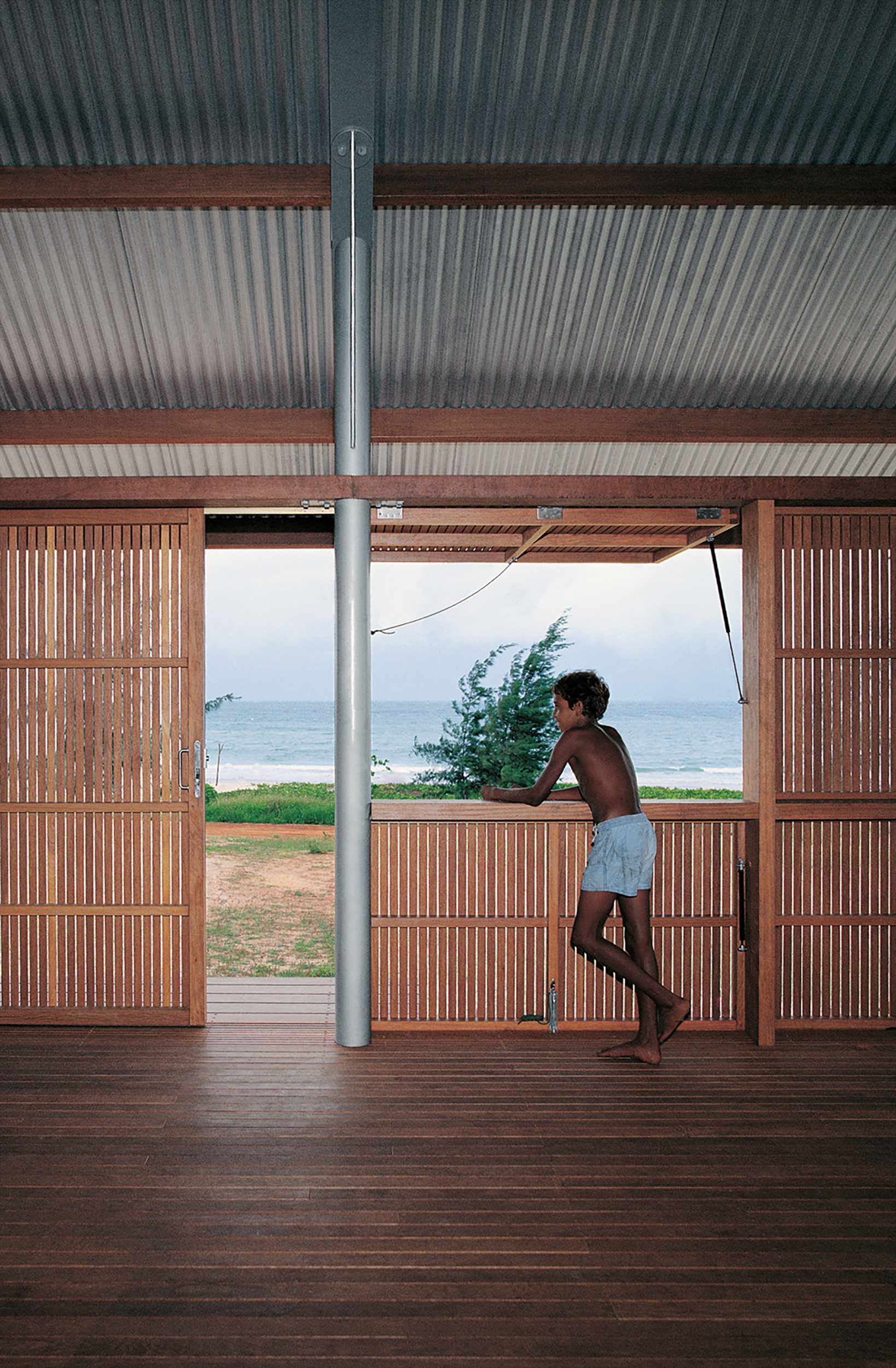
Lieu: Yirrkala, Australia
Type: Maison
Builders: Simon Thorpe - John Colquhuon
Honorary Engineer: James Taylor & Associates
Photography: Reiner Blunck - Glenn Murcutt
Publié: Juin 2019
Catégorie: Architecture
Source